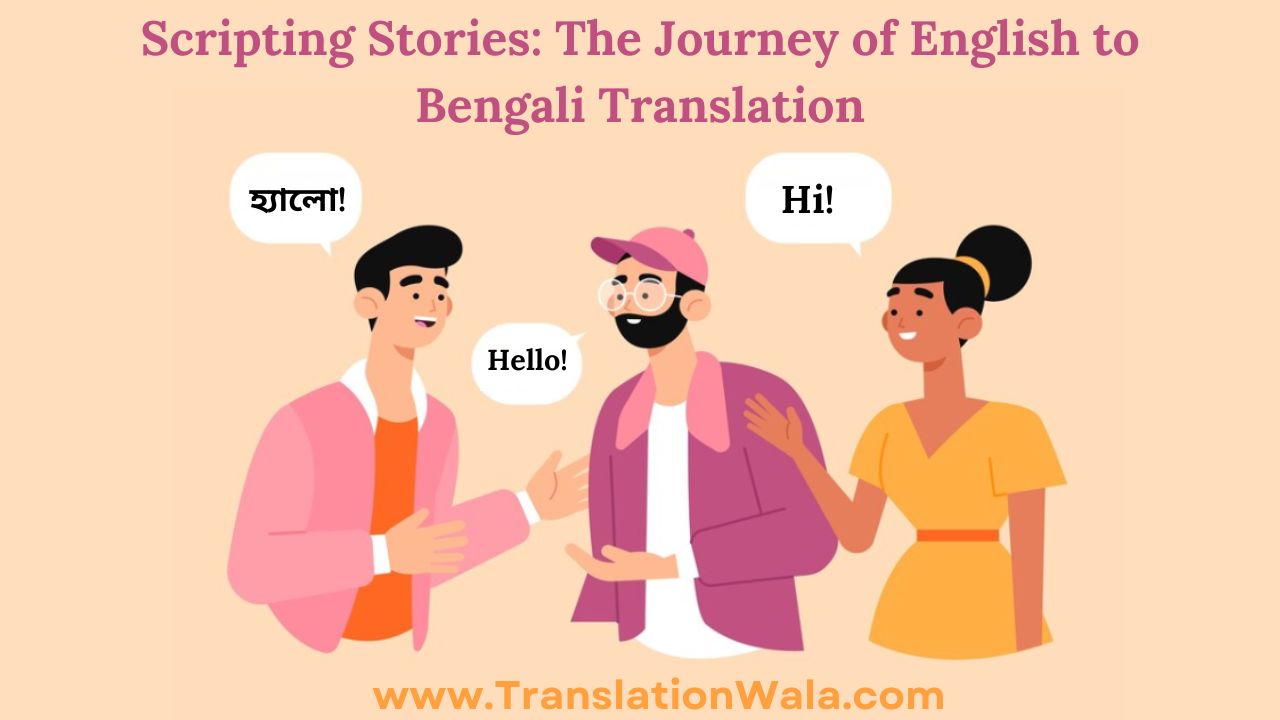There are many threads that make up human conversation, and each language is a unique and colorful one. The art of translation goes beyond just switching words around. It bridges the gap between these languages. It’s a trip that brings stories to life, promotes cultural exchange, and improves the literary environment when done from English to Bengali Translation.
Early Encounters: The Colonial Imprint
The first steps toward English to Bengali Translation were taken during the British Raj in the 1800s. Official papers and legal texts had to be translated by colonial managers so that future projects could be started. They were challenged to find the core of English ideas in the complex language of Bengali, and translators like Ram Mohan Roy rose to the occasion. In the beginning, translation was mostly about true writings. However, this set the stage for a more subtle approach in the years to come.
The Bengal Renaissance: A Flourishing of Ideas
The Bengal Renaissance happened in the 1800s and was a time of educational and artistic growth. Rabindranath Tagore, Bankim Chandra Chattopadhyay, and Michael Madhusudan Dutt were some of the first Bengali writers to translate Western works into Bengali. Tagore, who was a great writer himself, adapted works by Shakespeare, Keats, and Shelley, opening up new ways of thinking and writing for Bengali readers. These versions weren’t just exact copies; they were artistic changes that added Bengali touches to Western works. During this time, a new “translation style” came into being, one that tried to capture not only the words but also the spirit of the source text.
The 20th Century: Expanding Horizons
In the 20th century, there were a lot more translated works in a wider range of fields. There were a lot of different views that Bengali readers could hear, from Premchand’s social realism to Virginia Woolf’s modernist experimentation. Lila Majumdar and Achinta Kumar Sengupta were two of the most important translators who brought the works of great foreign writers like Fyodor Dostoevsky and Leo Tolstoy to Bengali readers. During this time, science and technical books were also translated, which helped people share their knowledge and sped up Bengal’s intellectual growth.
Also Read: Seamless Communication: English to Kannada Translation Hacks
The Digital Age: New Tools, New Challenges
English to Bengali translation has changed a lot since the beginning of the digital age. There are now machine translation tools that can translate text quickly and accurately. But these tools have a hard time with the subtleties of language, especially Bengali’s rich cultural background. In this digital age, it can be hard for human translators to use technology while still adding the artistic touch that makes the translated text come to life.
Beyond the Text: The Art of Translation
Translating from English to Bengali is more than just a matter of technique. It’s an artistic process that needs a deep knowledge of both languages and the cultures they reflect. A good translator works as a link between languages, getting the main idea of the story across. They deal with the tricky parts of slang, jokes, and cultural references to make sure the Bengali reader can understand what is being said.
The Impact: A Tapestry of Understanding
The process of translating from English to Bengali has had a huge effect on Bengali writing and culture. It has made room for new ideas, broadened people’s views, and helped people from different countries understand each other better. Bengali readers now have access to a huge body of writing that has made their lives better on many levels. Bengali writers have also been affected by translated works, which have led to new writing styles and increased creativity.
The Road Ahead: Bridging the Gap
When we look to the future, English to Bengali Translation looks like it will be fun. As the world becomes more linked, it will become even more important to be able to communicate clearly across languages. Translators will continue to be very important for sharing information, encouraging cultural exchange, and making sure that stories are told across countries and languages.
Machine translation tools that can better understand the subtleties of Bengali need to keep getting better. It is also very important to train a new breed of skilled translators who are fluent in both English and Bengali writing. The process of translating from English to Bengali will continue to bring people from different cultures together by using technology and developing human ability. This will help make the world a better place where languages are beautiful and varied.
